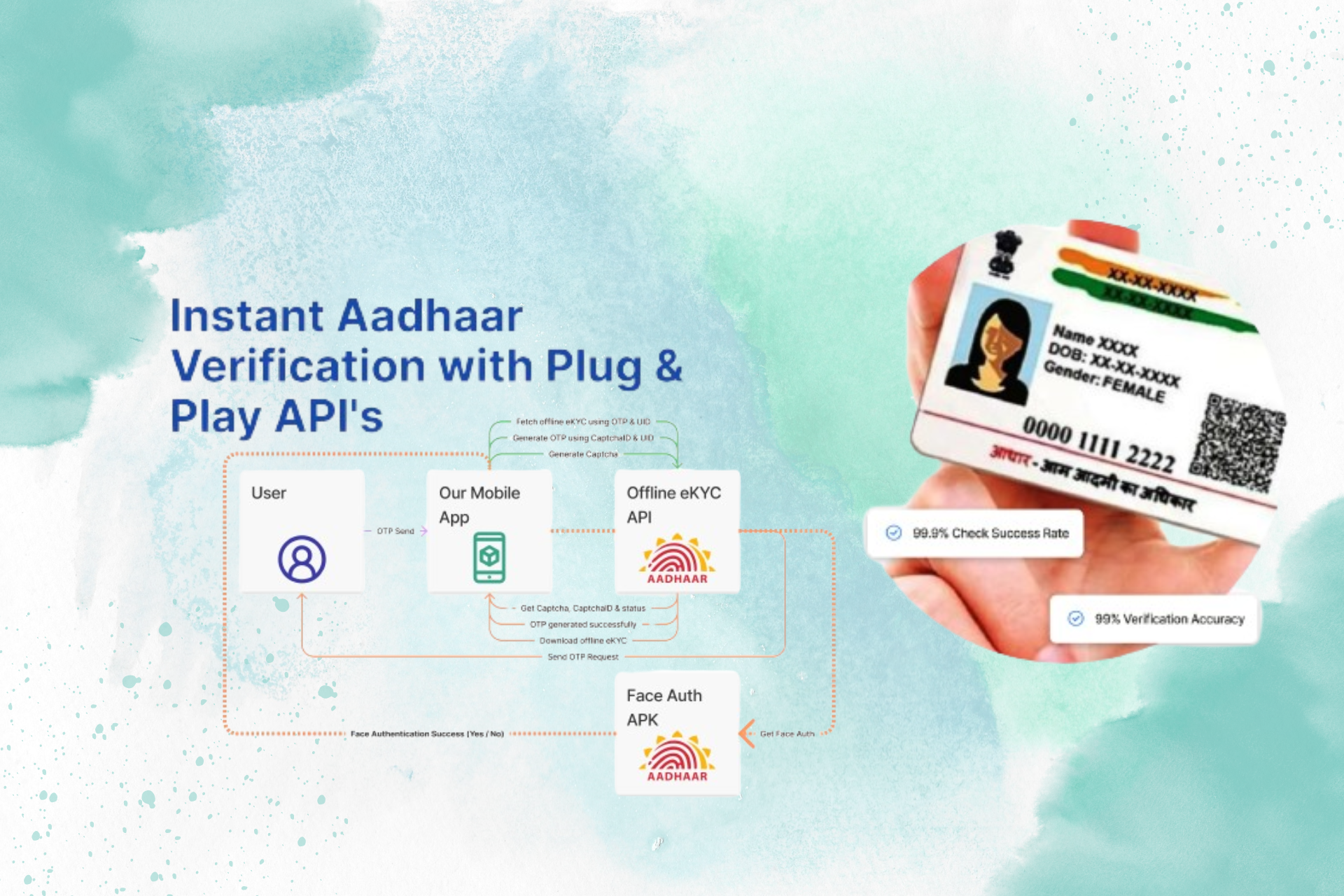In an era where digital transactions and online interactions are becoming the norm, ensuring secure authentication processes is paramount. Governments and organizations around the world are increasingly turning to robust identity verification systems to enhance security and streamline operations. One such system that has gained significant traction, particularly in India, is the Aadhaar Verification API.
Understanding Aadhaar Verification API
The Aadhaar Verification API is a service provided by the Unique Identification Authority of India (UIDAI), the governmental body responsible for implementing Aadhaar, India's biometric identification system. Aadhaar, a 12-digit unique identification number, serves as proof of identity and address for Indian residents.
The Aadhaar Verification API allows entities such as banks, telecom operators, government agencies, and other organizations to verify an individual's identity by cross-referencing their Aadhaar details in real-time. This API enables seamless and secure authentication, facilitating various online services and transactions.
Key Features and Benefits
Robust Authentication: The Aadhaar Verification API leverages biometric and demographic data stored in the Aadhaar database, ensuring robust authentication of individuals. This reduces the risk of identity theft and fraud.
Real-time Verification: Organizations can verify an individual's identity in real-time, enabling instant processing of applications and transactions. This feature enhances efficiency and customer experience.
Secure Encryption: The API employs secure encryption protocols to safeguard sensitive data during transmission, maintaining the confidentiality and integrity of personal information.
Compliance and Regulation: Aadhaar Verification API adheres to stringent regulatory standards set forth by the UIDAI, ensuring compliance with data protection laws and regulations. This instills trust and confidence among users regarding the privacy and security of their information.
Cost-effective Solution: By leveraging the Aadhaar Verification API, organizations can streamline their verification processes, reducing operational costs associated with manual verification methods.
Use Cases
Financial Services: Banks and financial institutions utilize the Aadhaar Verification API for customer onboarding, KYC (Know Your Customer) verification, and authentication of transactions, enhancing security and regulatory compliance.
Telecom Sector: Telecom operators employ Aadhaar verification to verify the identity of subscribers for SIM card activation, ensuring compliance with government regulations and mitigating the risk of fraudulent activities.
Government Services: Government agencies utilize Aadhaar verification for various services such as social welfare schemes, passport applications, and voter registration, enabling efficient delivery of public services while minimizing identity-related fraud.
E-commerce and Digital Services: E-commerce platforms and digital service providers integrate Aadhaar verification to authenticate users, prevent unauthorized access, and enhance trust in online transactions.
Challenges and Considerations
Despite its numerous benefits, the Aadhaar Verification API also poses certain challenges and considerations:
Privacy Concerns: The collection and storage of biometric and demographic data raise concerns regarding privacy and data protection. Ensuring robust security measures and regulatory compliance is essential to address these concerns.
Inclusivity: While Aadhaar has been widely adopted, ensuring inclusivity remains a challenge, particularly in remote areas with limited access to technology and infrastructure. Efforts to bridge the digital divide are crucial to ensure equitable access to services.
Security Risks: Like any digital system, the Aadhaar Verification API is susceptible to security risks such as data breaches and cyber-attacks. Continual monitoring, regular updates, and adherence to best security practices are necessary to mitigate these risks.
Conclusion
The Aadhaar Verification API represents a significant advancement in the realm of identity verification, offering a secure, efficient, and cost-effective solution for organizations across various sectors. By leveraging biometric authentication and real-time verification capabilities, this API not only enhances security but also facilitates the seamless delivery of services in the digital age.
However, it is imperative for stakeholders to address challenges such as privacy concerns, inclusivity, and security risks to ensure the responsible and ethical use of Aadhaar data. With the right measures in place, the Aadhaar Verification API has the potential to revolutionize identity verification processes, paving the way for a more secure and inclusive digital ecosystem.






